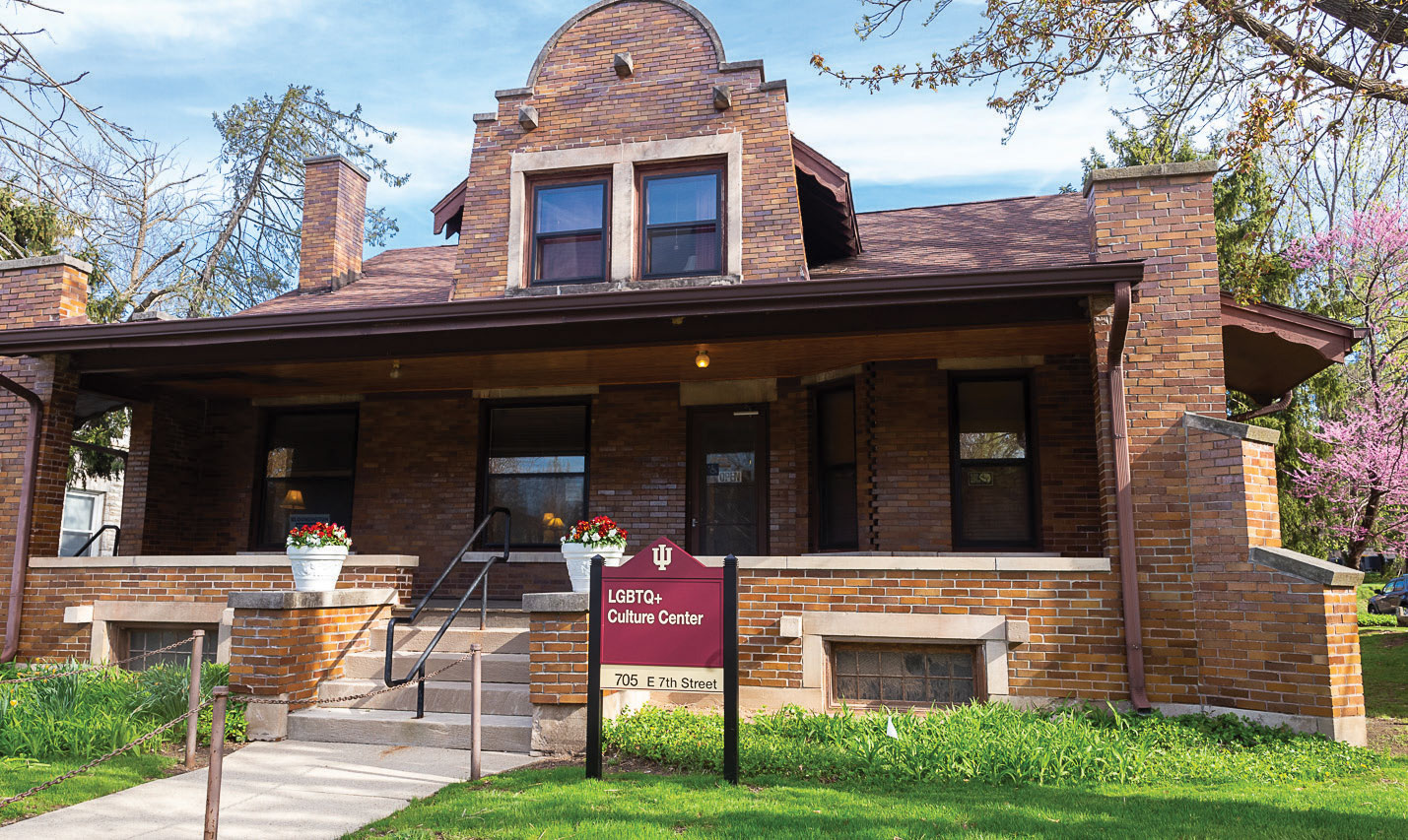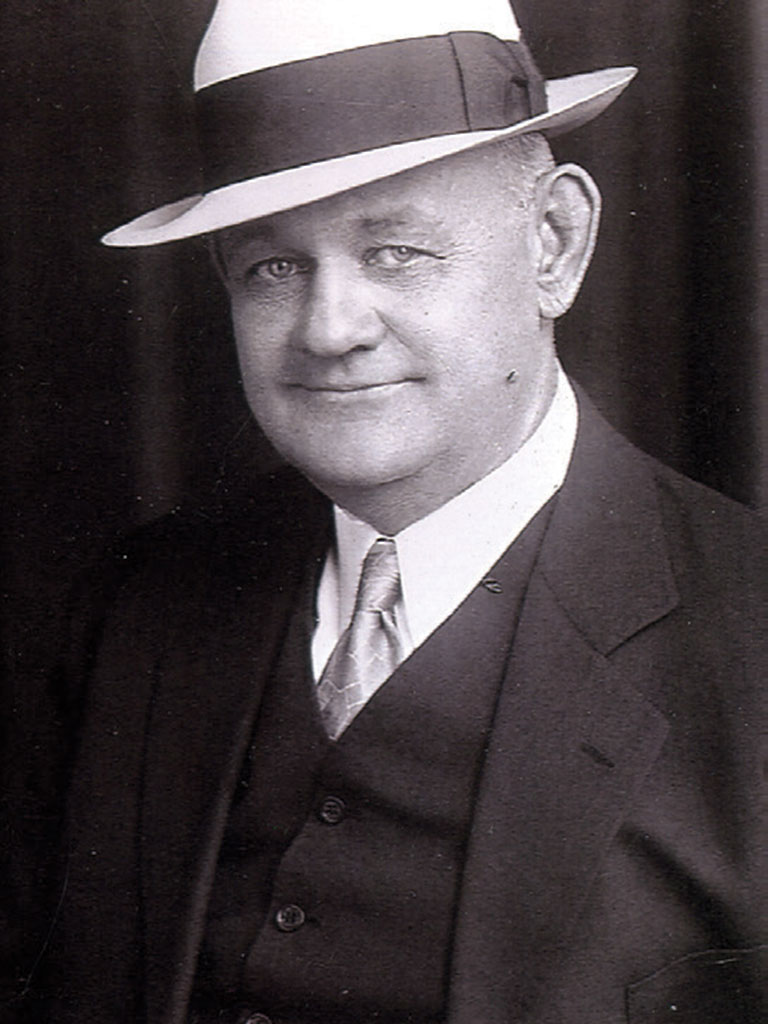The IU LGBTQ+ Culture Center fittingly occupies a house originally built for the first Dean of the School of Education, Henry Lester Smith, and his wife Johnnie Rutland Smith—two passionate champions of civil rights.
This story originally appeared in Volume 2 Issue 2 of the IU Bicentennial Magazine. It is published here with permission.
As you enter the old brick home in the heart of the campus, you’ll find a sign above the fireplace mantel that reads “Welcome Home.” That sign has been a symbol of welcome for hundreds of students for the past 25 years whose sexual orientation or gender identity has caused them to feel less than welcome in many places in their lives. Students who are not welcome in their own homes come to see this space as a refuge, as a sanctuary, as a place to be themselves. In fact, LGBTQ+ students who have graduated and gone on to live meaningful lives and do great things have returned to this house to express their thanks to our staff for the support they found during some difficult years in their lives.
Opened in 1994 as the GLB Student Support Services Office, the ‘T’ for transgender was added a few years later. In 2016 the office took on a new title, the LGBTQ+ Culture Center to affirm the variety of identities with which current students identify. This name change happened soon after the former office, which originally reported to the Dean of Students, was invited to join the Office of the Vice President for Diversity, Equity, and Multicultural Affairs.
The fact that the center is located in a house, as opposed to an administrative building, is significant. That was noted when the building was renovated in 2011 and ‘rainbow’ ribbons were cut by Provost Karen Hanson, Dean of Students Pete Goldsmith, and Peg Zeglin Brand, the wife of the university president, Myles Brand, whose decision to open the office sparked a legislative controversy and Chancellor Emeritus Ken Gros Louis, whose gentle persuasion with the Board of Trustees led to the office’s eventual opening. As the building was rededicated, Chancellor Emeritus Gros Louis said: “The sign in front of this building identifies it as an office. But the people who first built and lived in it; the workers who later renovated it; the students, faculty, staff, and alumni who have passed through it; the benefactors who donated over $20,000 for its furnishings; and all of us here today know that it is really, a home.”




